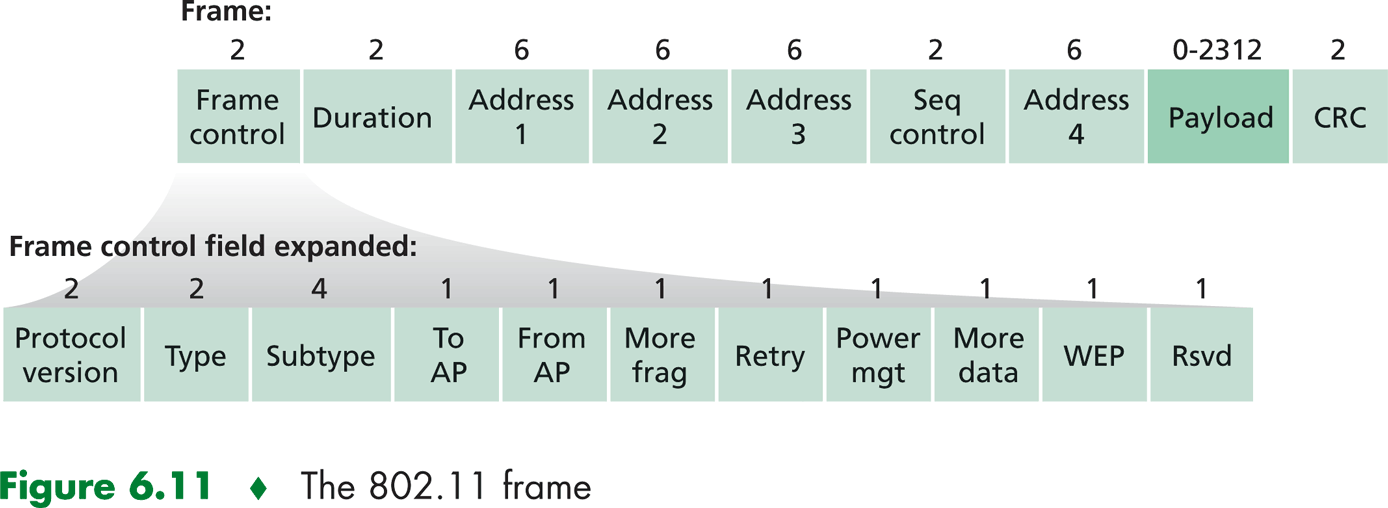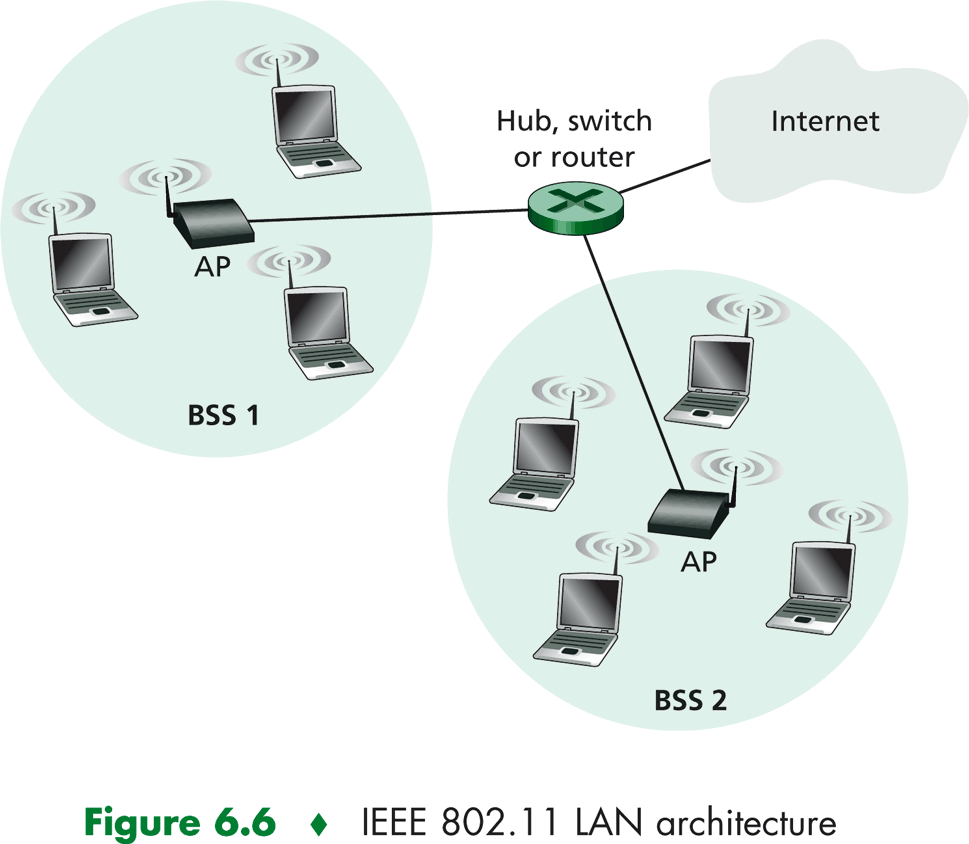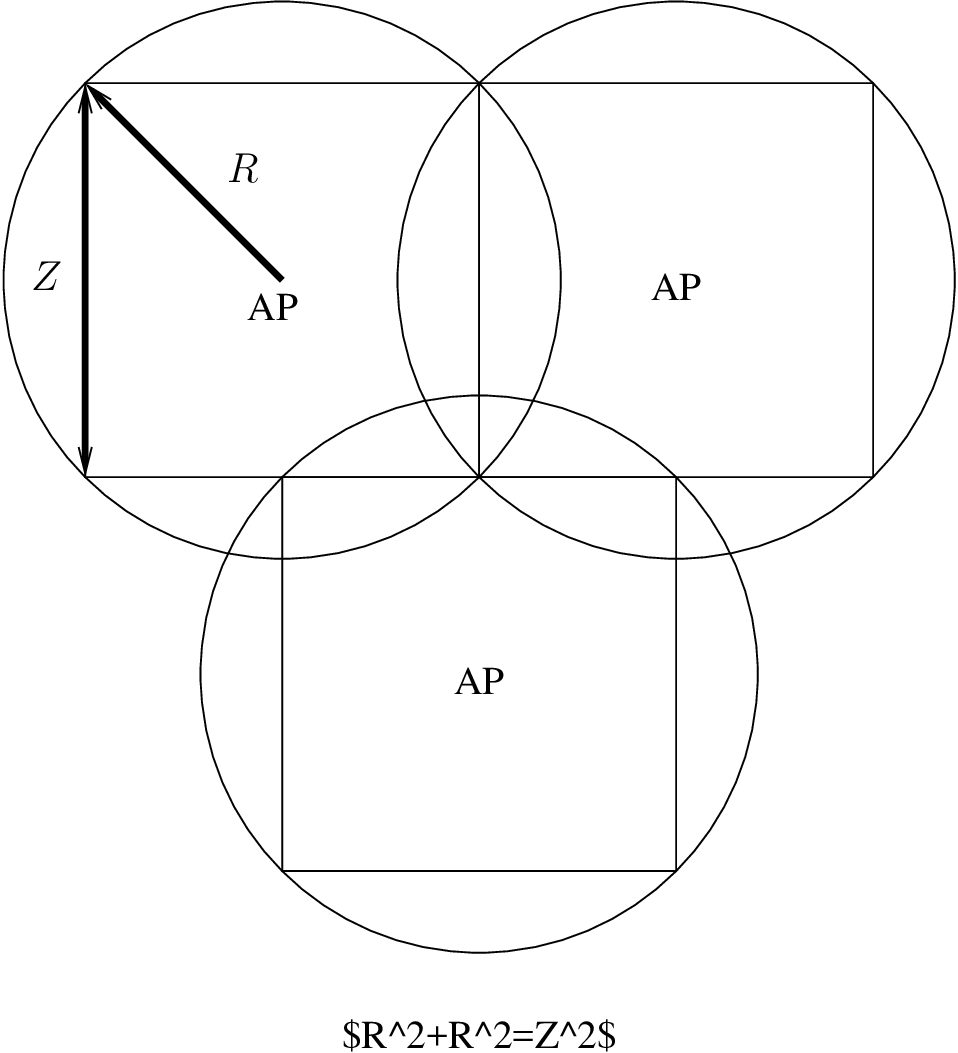WiFi
Vicente González Ruiz
December 25, 2013
Contents
1 History
- Wireless LAN IEEE 802.11. WiFi
es simplemente una norma de calidad (como THX o HiFi para los equipos
de audio). WiFi certification is provided by the WiFI Alliance (http://www.wi-fi.org).
The ITU-R regulates allocation of RF bands, the IEEE specifies how RF
is modulated to carry information and WiFi ensures that vendors make
devices that are interoperable.
- The terms 802.11 and Wi-Fi appear interchangeably, but this is incorrect.
WiFi is an industry-driven interoperability certification based on a subset
of 802.11. The Wi-Fi specification came about because market demand
led the Wi-Fi Alliance to begin certifying products before amendments to
the 802.11 standard were complete. The 802.11 standard has since caught
up with and passed Wi-Fi.
- From the point of view of teleworkers, the most popular access approaches
to connectivity are those defined by the IEEE 802.11b and IEEE 802.11g
protocols. Security was originally intentionally weak in these protocols
because of the restrictive export requirements of multiple governments.
The latest standard, 802.11n, is a proposed amendment that builds on
the previous 802.11 standards by adding multiple-input multiple-output
(MIMO).
- Uso creciente porque permite una movilidad total en distancias medias
(una casa, por ejemplo).
- Todas utilizan el mismo protocolo de acceso al medio, el CSMA/CA, y la
misma estructura de frame.
- Es muy acertado interpretar una red WiFi (un AP m’as un conjunto de
hosts) como una red Ethernet de medio compartido.
- Municipal WiFi: Municipal governments have also joined the Wi-Fi
revolution. Often working with service providers, cities are deploying
municipal wireless networks. Some of these networks provide high-speed
Internet access at no cost or for substantially less than the price of other
broadband services. Other cities reserve their Wi-Fi networks for official
use, providing police, fire fighters, and city workers remote access to the
Internet and municipal networks.
2 Hardware
- Wireless technology uses the unlicensed radio spectrum to send and receive
data. The unlicensed spectrum is accessible to anyone who has a wireless
router and wireless technology in the device they are using.
- Most municipal wireless networks use a mesh topology rather than
a hub-and-spoke model. A mesh is a series of access points (radio
transmitters) as shown in the figure. Each access point is in range and can
communicate with at least two other access points. The mesh blankets its
area with radio signals. Signals travel from access point to access point
through this cloud. Most municipal wireless networks use a mesh topology
rather than a hub-and-spoke model. A mesh is a series of access points
(radio transmitters) as shown in the figure. Each access point is in range
and can communicate with at least two other access points. The mesh
blankets its area with radio signals. Signals travel from access point to
access point through this cloud.
- La distancia a recorrer depende del tipo de antenas usadas
(direccionales/no-direccionales), de las potencias de emisi’on y de los
objetos que puedan existir entre las antenas.
- La señales de radio WiFi se reflejan (sobre todo en superficies met’alicas)
y se refractan. Por este motivo, aparte del ruido presente en el medio y de
las interferencias con otras señales, son frecuentes las auto-interferencias
provocadas por la propagaci’on multicamino (v’ease la Secci’on ??).
- Sin obst’aculos y usando antenas unidireccionales (parab’olicas o planas)
las distancias pueden ser de decenas de kil’ometros.
- Dentro de las casas, y usando antenas no direccionales (bobinas o dipolos)
las distancias suelen ser de unos pocos metros (dos o tres paredes, a lo
sumo).
Modos
Infrastructura
- Es el modo m’as frecuente.
- El AP (Access Point) permite que los nodos m’oviles se comuniquen entre
s’i y con la red “wired”.
- Los nodos m’oviles junto con el AP correspondiente forman un BSS (Basic
Service Set). Varios APs puede asociarse en un ESS (Extended Service
Set) para aumentar el ’area de covertura (los usuarios al moverse pueden
ser atendidos por varios APs sin notar ning’un tipo de cambio de AP –
como ocurre en la UAL –).
- Todas las comunicaciones pasan a trav’es del AP.
- Todos los APs tienen un SSID (Service Set Identifier) que deber’ia ser
’unico. El SSID es una cadena alfanum’erica que asigna el administrador
de la red al AP.
Modo Ad-Hoc
- Las estaciones se comunican directamente entre porque est’an lo
suficientemente pr’oximas.
Access points (APs)
An access point connect wireless clients (or stations) to the wired LAN. In essence,
an AP converts the layer-3 data packets from their 802.11 frame encapsulation
format in the air to the 802.3 Ethernet frame format on the wired Ethernet network.
An AP is a layer-2 device that functions like an 802.3 Ethernet hub, because it uses a
shared medium.
Planning a Wireless LAN
3 Modulation
- Uses the unlicensed radio spectrum.
4 Multiplexing
- Con la idea de acomodar a m’as de un AP en una misma regi’on
geogr’afica, en WiFi se definen un conjunto de canales de frecuencia.
- Existen un total de 11 canales que est’a parcialmente solapados entre s’i.
- In North America, the 2.4 Gz band is broken down into 11 channels and 13
channels for europe). These channels have a center frequency separation
of 5 MHz and a overall channel bandwidth (or frequency occupation) of
22 MHz. Therefore, there is an overlap between succesive channels.
- Cada 5 canales no hay solapamiento entre ellos. S’olo los canales 1, 6 y 11
no se solapan entre s’i. 3 Adjacent APs should use these channels.
El proceso de asociaci’on
- Los AP’s generan peri’odicamente beacon frames con la idea de anunciar
su presencia a los nodos m’oviles.
- En un beacon frame figura la direcci’on f’isica y la SSID del AP (junto
con los rates soportados y el tipo de cifrado).
- Los beacon frames nunca est’an cifrados.
- Los beacon frames s’olo se transmiten a trav’es del canal para el que se ha
configurado la emisi’on del AP.
- El host que est’a escuchando los beacon frames (passive scanning) generalmente
se intenta asociar con el AP que mayor potencia de señal hace llegar hasta ’el.
En ese momento pueden ocurrir dos cosas:
- Que el AP no controle qui’en se asocia.
- Que el AP s’i lo haga. En este caso el control se realiza de dos formas
distintas:
- Permitiendo s’olo la conexi’on desde las direcciones f’isicas
previamente especificadas.
- Permitiendo s’olo la conexi’on desde aquellos nodos que sean
capaces de autentificarse.
- Que el AP est’e sobrecargado y no establezca la asociaci’on.
- Los hosts pueden forzar la recepci’on de un beacon frame emitiendo un mensaje
especial (active scanning).
- The association process has the following steps:
- The probing: El host que intenta asociarse emite un association
request frame (with the SSID of the AP and the supported rates)
que llega a todos los APs. S’olo el AP con el SSID correspondiente,
si permite la asociaci’on, contesta con un association response
frame (with the SSID, the supported rates and the security
implementation).
- The authentication: 802.11 was originally developed with two
authentication mechanisms. The first one, called open authentication,
is a NULL authentication where the client says “authenticate
me” and the AP responds with “yes”. The second authentication
mechanism is referred as shared key authentication. This technique is
basen on a Wired Equivalency Protection (WEP) key that is shared
between the client and the AP. The client sends an authentication
request to the AP and the AP sens a challenge text to the client, who
encrypts the message using a shared key and returns the encrypted
text back to the AP. If the AP decrypts the challenge text, the AP
authenticates the station.
- The association: The client learns the BSSID (the PC MAC
address) and the AP maps a logical port known as the Association
IDentifier (AID) to the WLAN client, that it is identified by its MAC
address.
Estructura del frame IEEE 802.11

- Frame control: Diversa informaci’on sobre la transmisi’on del frame.
- Duration: Usado en el frame RTS. Sirve para reservar ancho de banda
durante un determinado intervalo de tiempo.
- Address 1: Direcci’on f’isica del interface de red WiFi destino (usado
s’olo en el modo Infraestructure).
- Address 2: Direcci’on f’isica del interface de red WiFi origen (usado s’olo
en el modo Infraestructure).
- Address 3: Direcci’on f’isica del interface de red (t’ipicamente Ethernet)
del router (si el frame va dirigido hacia el router de la subred). Sin este
campo ser’ia imposible enviar mensajes fuera de la BSS. Para enviar un
frame desde un host m’ovil hacia Internet, Address 2 tendr’ia la MAC del
host origen, Address 1 la MAC del correspondiente AP y Address 3, la
MAC del router). Usado s’olo en el modo Infraestructure.
- Seq control: N’umero de secuencia usado en el protocolo ARQ de parada
y espera para controlar las p’erdidas de frames.
- Address 4: Direcci’on f’isica del adpatador de red WiFi de otro host
(usado s’olo en el modo Ad Hoc).
- Payload: Los datos (algo m’as 2K bytes a lo sumo).
- CRC: Un CRC-32 (ojo, la figura est’a mal).
5 Delay
- WiFi uses a shared medium, with collisions. Delay is unpredictable.
6 Bit-rates
- Estas capacidades son m’aximas. Cuando la SNR del enlace no es
suficientemente alta y los frames llegan con errores, las tasas de
transmisi’on se reducen. Tras una reducci’on, si los errores desaparecen,
las tasas de transmisi’on aumentan.
7 Routing
Broadcasting
- Por la naturaleza onmidireccional de los enlaces de radio, el broadcasting
es natural en WiFi, tanto en el modo adhoc como en el modo
infraestructura.
8 Security
Securing a wireless LAN
- SSID cloaking - Disable SSID broadcasts from APs.
- MAC address filtering - Specify manually the MAC aadress of the stations
that are allowed to associate with the APs.
- Use the lastest encription mechanism (WPA2).
References





